A lot of people confuse user cases and stories, but actually they are different concepts. They might have some similar functions. For example, gathering information about user requirements and goals. But they are designed for different purposes. This article discusses in detail the two concepts and how they are different. The usage and practicality of the two concepts to businesses is also highlighted in the article. This article aims to serve as an aid for its readers and help them gain insight into this topic.
What is a use case?
Have you ever felt that the product you imagined and the product you developed were very different? Or the feature that you wanted is missing from the final version. Many product people can relate to these questions. This can help to understand why businesses need a use case in the first place.
In simple terms, a use case is an account of how a person who uses a certain process will achieve a goal. In technical terms, it is the description of the interaction between system and actors. The product of this process is a document containing all the steps followed by a user to achieve a goal.
For example, you are a carpenter planning to craft a door. The use case for this scenario would consist of all the steps taken by the carpenter to achieve the goal. This whole documentation would help study the flaws and errors of the process.
Product teams utilize use cases in a variety of situations. It is used in designing, testing and development. This process also helps to develop a rough outline of how a user help manual should be designed. Errors and other flaws are also minimized through this process.
The whole process of use cases has certain key terms. These terms are the basis of the entire process and provide the backbone.
- The actor: This is the person or group of people interacting with the system. They are the users of the system.
- The goal: This is the outcome for which the use case was designed. It is usually the final result of this process.
- The system: This includes all the steps followed to achieve the set goal.
The three basic terms don’t apply to every situation. Every project, model and circumstance are different in complexity. For complex products, many other terms are used in a use case. Some of the terms are:
- Stakeholders: All the parties who have an interest in the outcome of the use case. It doesn’t have to be users only.
- Triggers: Are all the events due to which a use case begin.
- Preconditions: It is the combination of all factors necessary for the case to occur.
From a technical point of view, use cases are a detailed description of guidelines for developers. It gives an idea of what the developers need to include in the system. This also gives the developer a sense of direction to work in.
It’s also important to note that when creating use cases you shouldn’t just cover the ideal scenario, you should also prepare alternative paths:
- Main success scenarios [Basic Flow] – use case in which nothing goes wrong.
- Alternative paths [Alternative Flow] – these paths are a variation on the main theme. These exceptions are what happen when things go wrong at the system level.
What is a user story?
After describing use cases, let’s move on to user stories.
User stories are a simple description of the desire of a user for a need. These stories are written from an end-user point of view. The language used for user stories is very informal and easy to understand.
In technical words, it is the description of a feature from an end-user’s point of view. This story is used in agile software development. It helps the product team in identifying their users and requirements. It also helps to break down all the complexity into simple easy to understand words.
The user story is also an easy method of recording user requirements. It helps to identify some important questions. Questions like the who, what and why of a feature. All this description is written to shift the focus from writing to discussing features. It can help simplify the whole process and increase effectiveness.
It is important for a user story to have an outline. An acronym INVEST is widely used for this purpose. It helps in checking that all the requirements have been fulfilled.
- Independent: Not depending on other projects
- Negotiable: Room should be left for further development
- Valuable: Description of the value the end-user is going to get.
- Estimable: They should be estimated so that a proper plan can be developed.
- Small: Work should be small enough to be completed in 3-5 days
- Testable: Some mechanism to check the value delivery of the process
Now that both concepts have been described in detail it might feel that they are the same. The overlap between the two concepts is visible from far away but not near. Although what is same is their importance to the product team. They both are important components of the overall development process.
Why Create User Stories?
User stories are a simple way of defining what a user wants. Products can be explained clearly through it. A good user story will help all stakeholders in understanding the functionality of the product. It also helps in briefing the client on what the product is.
User stories can help to streamline the project
It means that a bigger goal can be divided into smaller achievable goals. This helps to achieve the project more efficiently and with less time waste. Smaller achievable goals mean little deviation from your goal.
Brings everyone on the same page
Their simple language means they are understandable by everyone. Both technical and non-technical members use this as a medium of communication. It also helps in engaging each stakeholder. The nature of user stories ignites product discussion among different stakeholders.
Provide a sense of purpose
By clearly defining the purpose of the product, user stories provide purpose to the whole mission. It also makes achieving the task easier for the development team. Due to user stories developers know why they are producing a product. This contributes to increased motivation.
Helps defining the whole product
It gives the development team the freedom to think out of the box. The team can then organize different ideas according to their priority. The criteria for priority might depend on factors like user value and complexity. This means that even the crazy ideas aren’t excluded from the process. They can be given a lower priority and handled accordingly.
Encourages a user focused approach
This method gives a lot of power to the end user. It means that everything is designed with the end users in mind, right from the beginning. Let it be a prototype, an MVP or a new feature, user stories help you keep the user in the middle of the focus. The stories align the product team with what users want. These stories serve as a constant reminder of serving user needs. Thus, user satisfaction is maximized due to user story.
Example of user story vs. use case
Let’s take an electric vehicle renting application as an example.
Imagine an application where you can list and rent all electric vehicle options in big cities.The users’ objective is to choose and successfully rent an electric vehicle.
Use case example
Use Case Name: Place Rent Order
Actors:
- Shopper
- Fulfillment System
- Billing System
Basic Use Case Description:
- User selects items to rent
- The User provides payment and shipping information
- User orders the items
- The system responds with confirmation of the order and a renting number that the user can use to check out the vehicle.
- The system will also provide the user with a countdown for the remainder of the renting time.
- The user may already have an account with the company with billing information.
Alternative flow would be:
- User selects items to rent
- The User provides payment and shipping information
- User changes mind and chooses another vehicle
- User deletes cart
- User selects new items
- User places order
- The system respond with confirmation of the order and a renting number that the user can use to check out the vehicle.
- The system will also provide the user with a countdown for the remainder of the renting time.
- The user may already have an account with the company with billing information.
User story example
As a user, I want to link the credit card to my profile so that I can pay for a rent faster, easier and without cash.
As a service provider, I want to add photos of my vehicles in the application so that I can attract more users.
As a user, I want several available vehicles to be displayed so that I can choose the most suitable option for me.
The differences between a user story vs use case
User focus vs technical focus
User story is drafted to explain a user’s needs. It highlights a problem that a user faces in his day to day life. The language of this draft is very simple. It is developed to keep all the stakeholders on the same page. On the other hand, use cases are developed for the product team only. It gives the team an idea of what the software should achieve. It also highlights all the steps the developers need to follow in order to make the software. For this reason, use cases contain a lot more detail than user stories.
General vs in-depth
User story is a simplified form of many users interacting with a software. Use cases are very specific in relation to user stories. They describe specific user actions with any system.
Short vs Detailed
User stories miss out on a lot of details. This is because it gives room for discussion and improvement. This aspect of user stories is deliberate. This encourages stakeholders to initiate discussions and improve the product. Use cases on the other hand are specific. They describe in detail all the steps that a developer will follow. There is usually no room for discussion.
Use stories are developed before the user case. In most cases they are developed by user interaction. One user story can generate multiple use cases. The combination of all such use cases produces a detailed document. This document has a description of the interaction between all software and users.
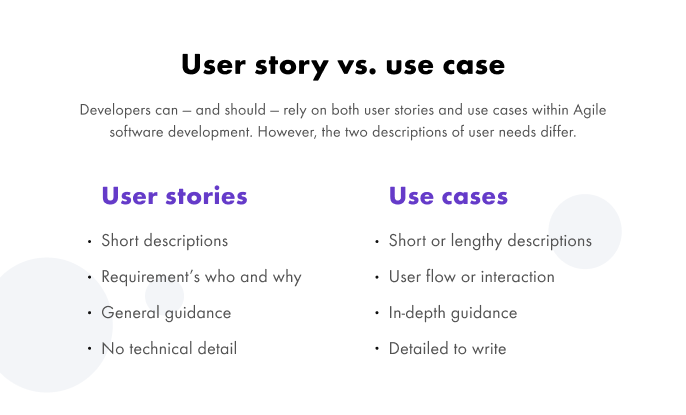
The similarities of a user story and a use case
The biggest similarity between the two approaches is the key components. User stories have components like user role, goal etc. Use cases also have similar concepts. It includes actor, pre-conditions and other terms. So, both of these concepts become similar in how they approach a problem.
When to use a user story vs use case?
User stories have a lot of uses in product development. They are used before use cases to start customer focused conversations. This conversation means more room for improvement in the customer model. It helps in providing clarity to the whole concept. User stories ensure no useless detail gets into the whole process. This also ensures that goals are set from the beginning of the process. Thus, user stories increase efficiency.
There are several places when use cases can be used. They can be used to document the process of a current system. Often when existing systems are updated they can provide a lot of technical problems. Use cases help in understanding the bigger picture of the existing system. So, problems can be avoided before any changes are made.
Another use of the use case is in the development of new systems. It helps in providing a detailed description of all the steps developers need to follow. It also helps in defining user goals and easing the development process.
WRAP UP
By now you know what user stories and use cases are all about and what their use is. These concepts are instrumental to a successful product.


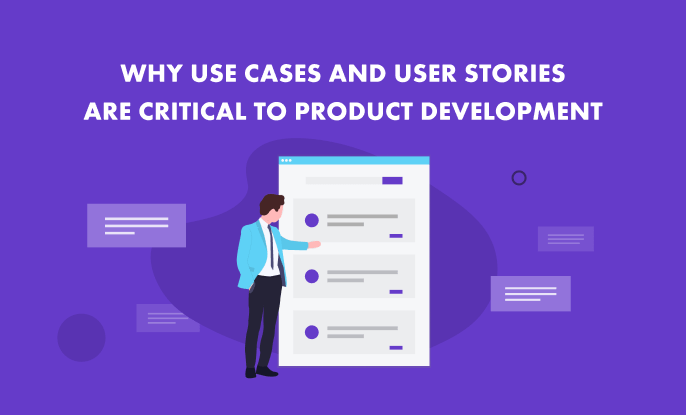
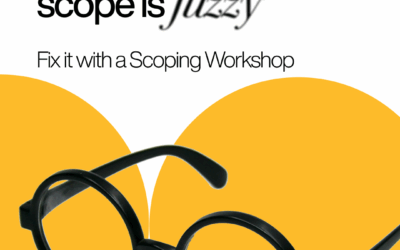
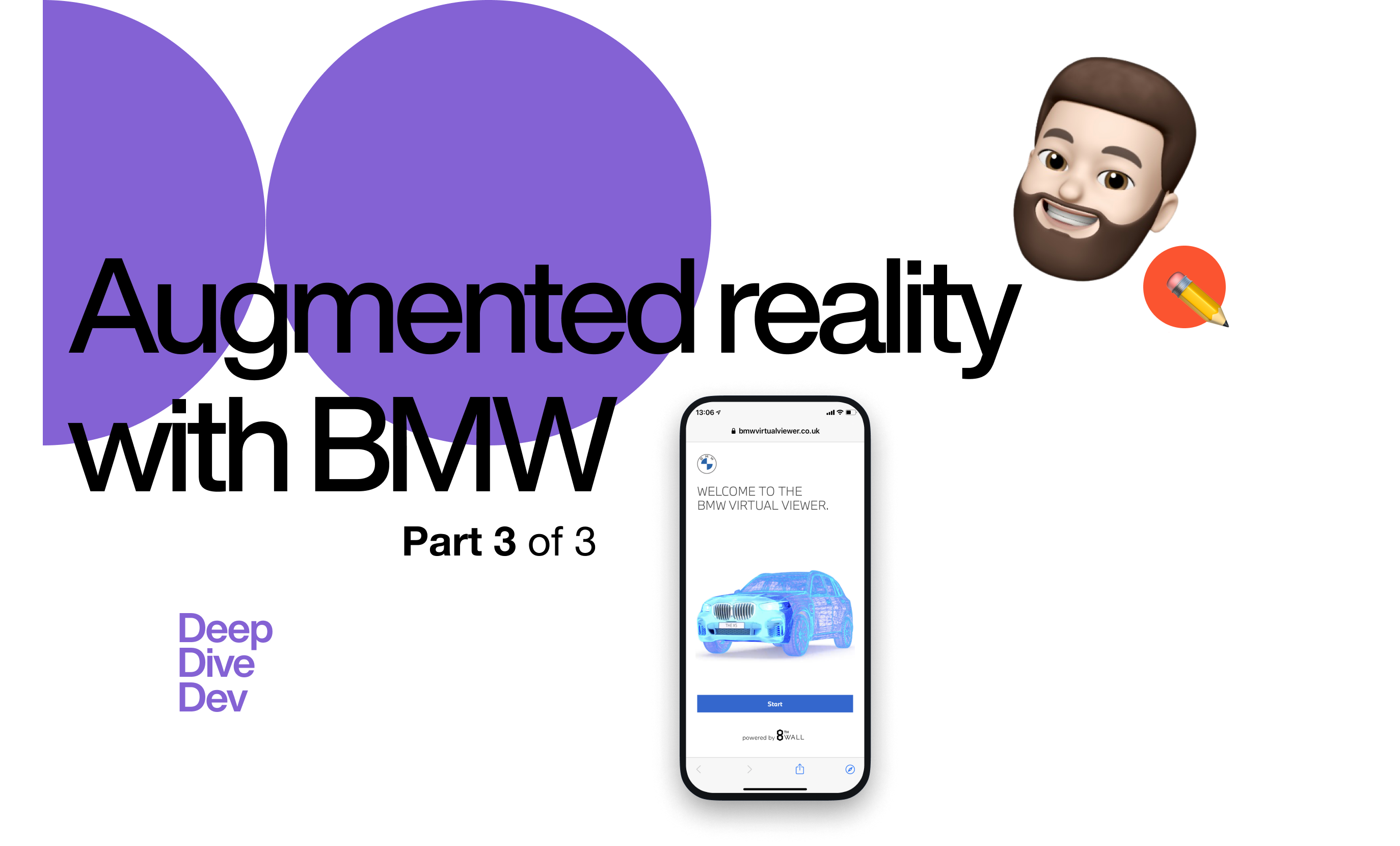
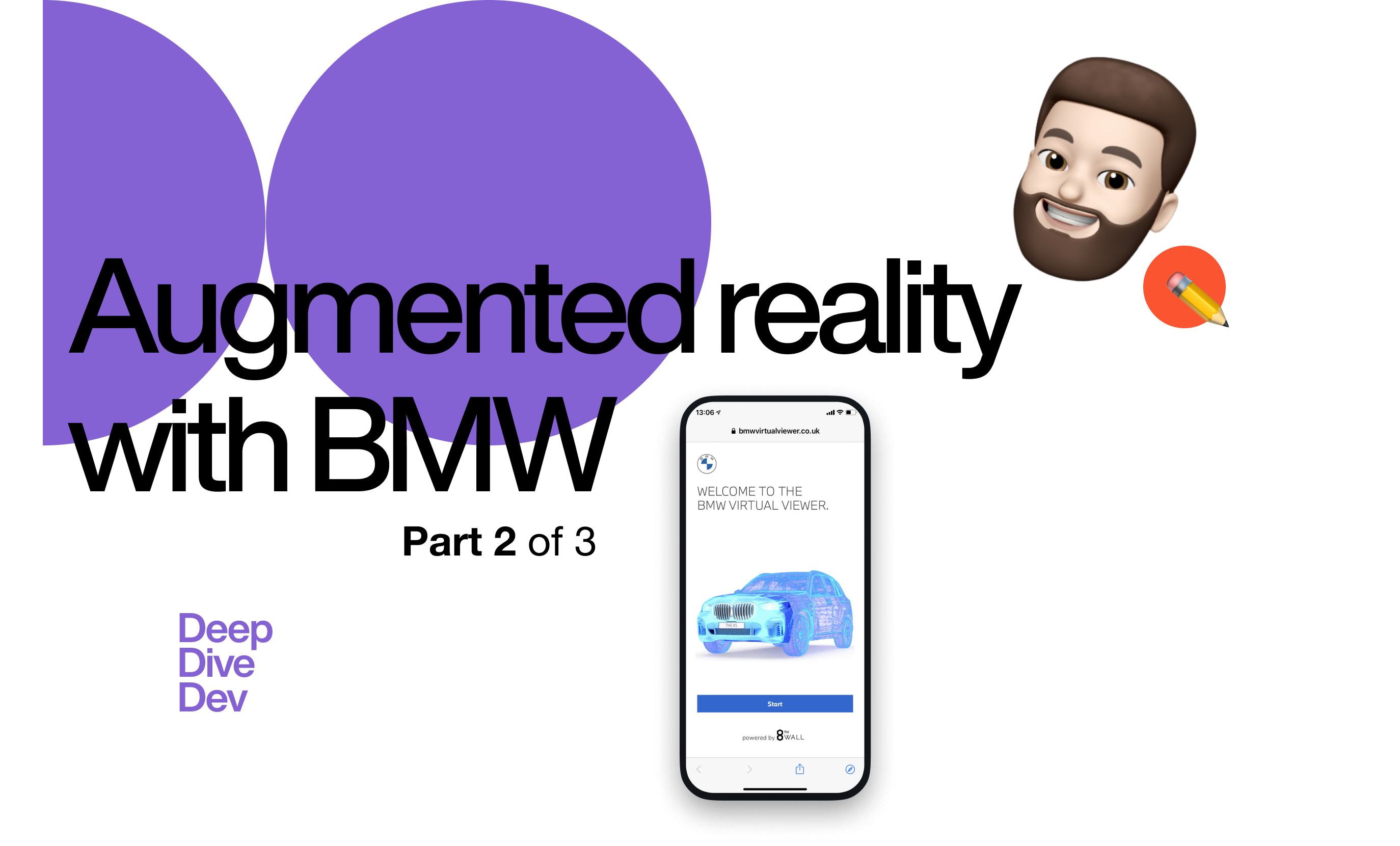
Have a look at our social media